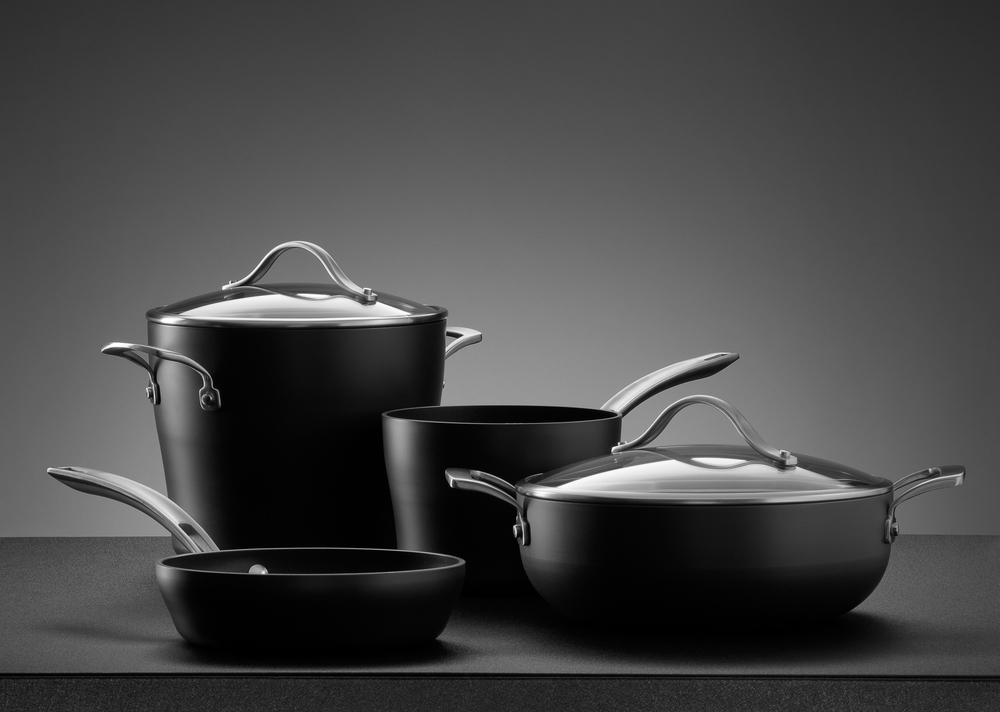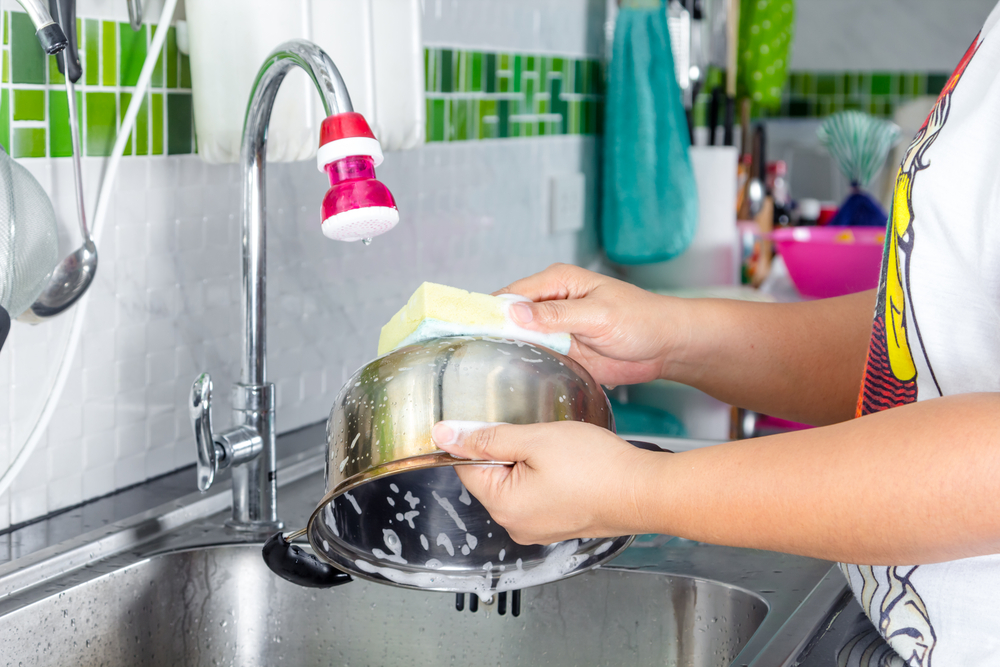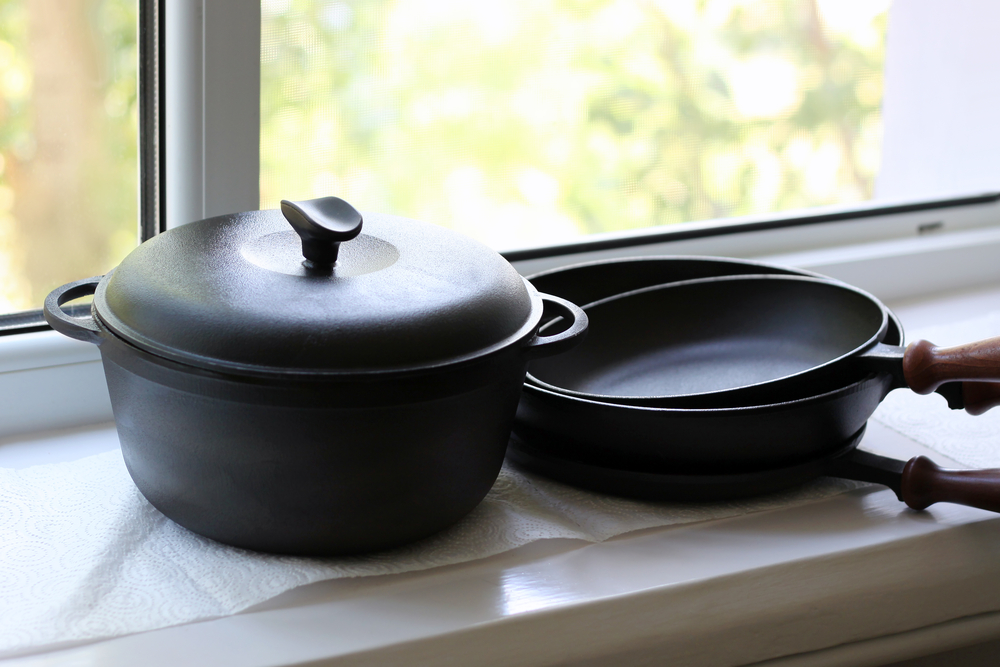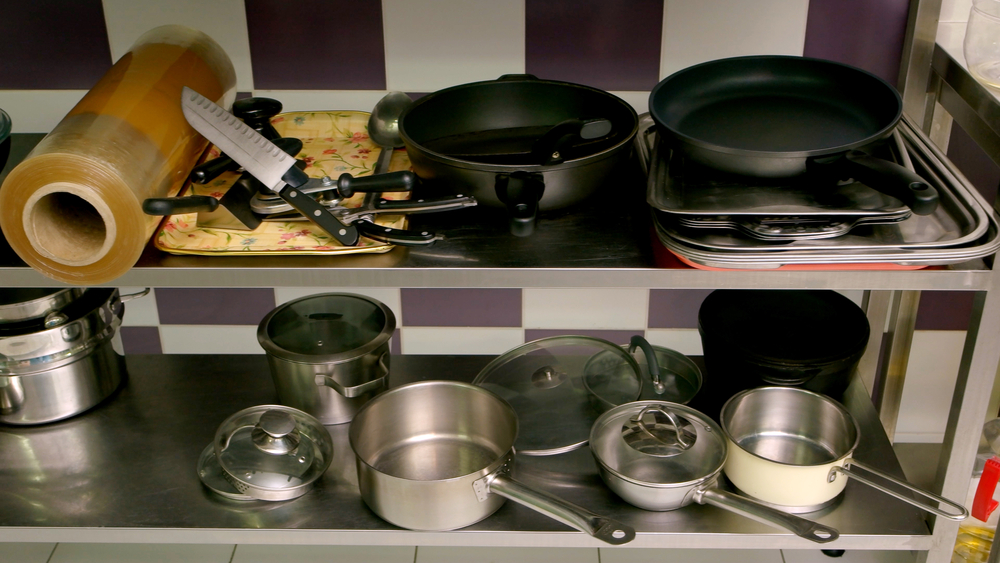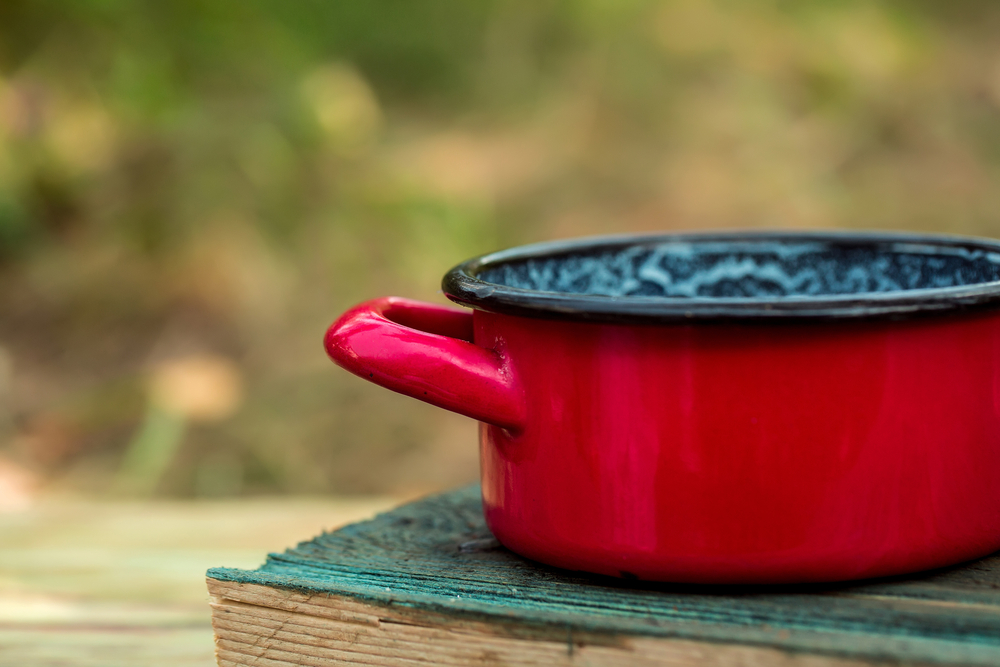Using vinegar to clean cast iron is one of the easiest and safest ways to remove rust patches from your cookware.
To remove rust using vinegar you will soak your pan in a 50/50 mixture of vinegar and water for up to eight hours. After that, you will gently scrub the rust away using a sponge or brush.
The rest of this article will teach you about the causes of rust as well as give a step by step guide on how to remove rust from cast iron with vinegar.
What Causes Cast Iron to Rust?
One of the most frustrating things that can occur with iron cookware is that, after several years, you may begin to notice rust. It is so common that it will occur at some point on virtually every piece of iron that you know.
Cast iron begins to rust when exposed to moisture. This process takes time and you won’t notice its effects instantly. However, after consistent exposure to moisture, you will begin to notice reddish rust patches on your cast iron.
When iron is exposed to moisture it allows oxygen atoms to bond with the iron atoms in a process known as oxidation. The oxidation eats away at the metal over time which creates reddish rust patches and will eventually destroy the iron if not removed.

Does Vinegar Actually Remove Rust in Cast Iron?
Yes, vinegar, specifically white vinegar, can be used to remove rust from cast iron. It is also a great option because it is safe for human contact and can be consumed in small amounts. This means that after using vinegar to clean your pan you won’t have to worry about small amounts of vinegar remaining and contaminating your food.
White vinegar contains a chemical called acetic acid. This acid is safe but is also strong enough that it can dissolve rust from cast iron which will allow you to scrub it away.
Other types of vinegar, like rice vinegar, do not have the same composition and do not have the same cleaning properties as white vinegar.
When using white vinegar to remove rust from cast iron you will want to soak the pan in the vinegar for several hours. This will allow the acid in the vinegar to do its job of dissolving the rust allowing you to scrape it away. After the vinegar has sat on the rust you can use a dishcloth, sponge, or scrubber to gently scrub away the loosened rust.
One important thing to remember when using vinegar to remove rust is that you need to rinse it thoroughly after you are done. Although the acetic acid in the vinegar will not damage the healthy metal in short periods, if left on the metal long enough it could begin to dissolve the rest of the iron.
How to Remove Rust From Cast Iron with Vinegar
In this section, you will learn about how to remove rust from cast iron using vinegar. It is important to follow these instructions carefully that way you can remove the iron as effectively as possible without damaging the underlying metal.
Remember, if the rust on the pan is relatively minimal you likely do not need to use vinegar. Although vinegar is considered safe and isn’t as corrosive as some other acids, it should still be used with caution as it can damage rust-free iron as well. Due to this, you should only use vinegar when there is significant iron damage that cannot be removed through other methods.
Things You’ll Need
The supplies that you will need to remove rust using vinegar are:
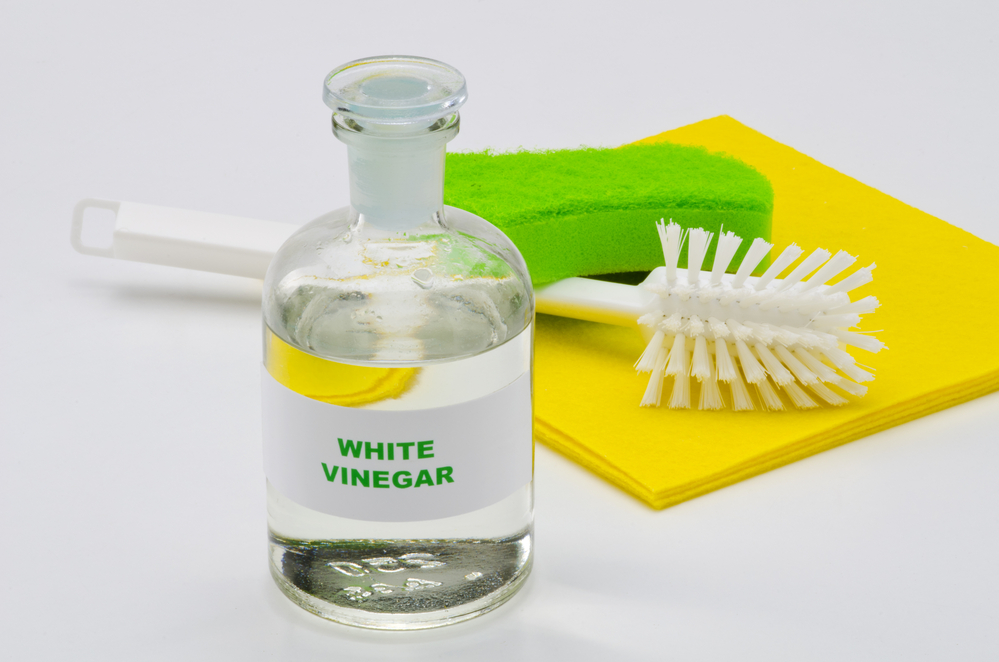
- White Vinegar
- Warm and cold water
- Cooking oil
- Aluminum foil
- Containers
- Kitchen scrubbers
- Dish soap
- Towel
- Seasoning
- Measuring cup
- Gloves
With all of these supplies at hand, you will be ready to begin the following steps.
Steps
Once you have gathered all of the previously listed supplies, you will be ready to begin the iron removal process.
1. Prepare Vinegar Mixture
The first step in the rust removal process is preparing your vinegar mixture. You want to make a mixture that is strong enough to dissolve the rust and make it easier to remove without damaging the metal surrounding it.
To achieve this you will want to make a mixture of equal parts white vinegar and water. This will make sure that there is enough acetic acid to dissolve the rust but not so much that it dissolves the rest of the iron.
Of course, you can adjust the concentration based on your needs. If a 50/50 mixture isn’t working then you may want to increase the mixture to 60/40 vinegar to water. This also applies if the mixture is too strong and is damaging the rest of the iron, you can always decrease the percentage of vinegar that is in the mixture.
2. Soak The Cast Iron
Once you have prepared your mixture you will want to soak the cast iron in the vinegar solution. There are two ways to do this, you can either submerge the entire pan or only submerge sections.
If there is a large amount of rust on your cast iron then it is best to submerge the entire pan. That way you won’t miss any small sections of rust and your entire pan can get a thorough cleaning.
If the amount of rust on your pan is minimal or only affects one section then there is no need to soak the rest of the pan. You can either partially submerge the pan in a container of solution or you can spray the solution onto the affected area. If you choose to spray the solution make sure you continue to check that there is solution covering the area throughout the soaking period.
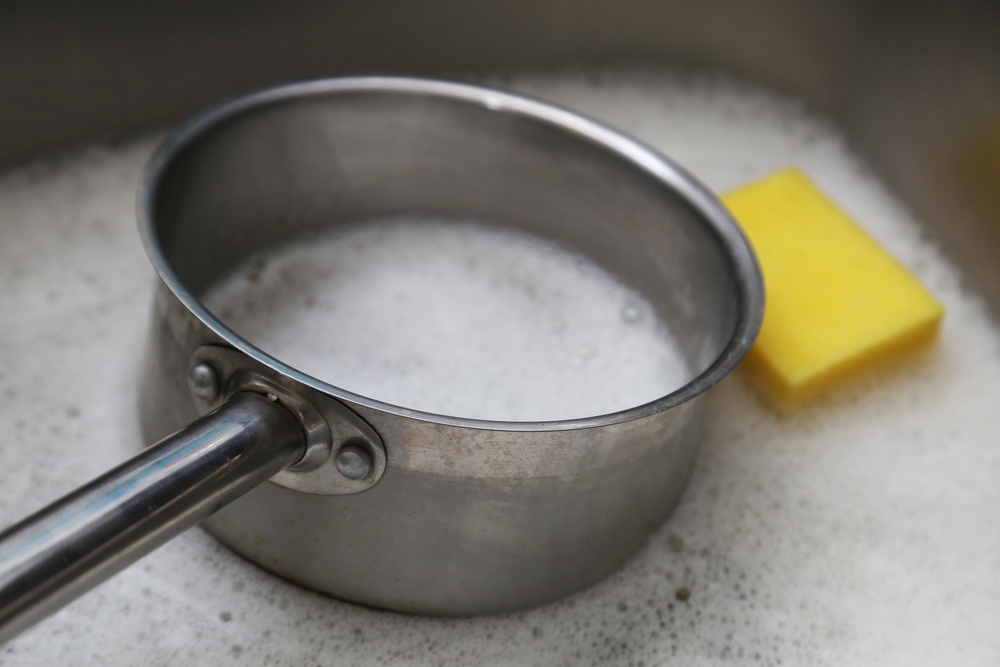
No matter which method you choose, you will want to soak your pan in the vinegar solution for several hours. You can soak your pan for up to eight hours without having any significant damage to the iron of the pan. Throughout the soaking process, you can keep checking your pan and remove it once the rust has softened and scrapes off easily.
Once you have soaked your pan for several hours, it is time to remove it and begin the next step.
3. Scrub The Pan
Once you have removed the pan from the vinegar solution it is time to begin the scrubbing process. Although the vinegar softened and removed much of the rust, it is necessary to scrub the rusted patches to fully remove the iron from the metal.
To do this you’ll want to use a kitchen sponge or scrubber. Using this tool you will gently scrub away at the patches of rust, frequently rinsing under warm water, until all of the rust has been scrubbed away.
Once you have finished scrubbing the rust away from your cast iron you should rinse the pan with more warm water. This is important to make sure that there are no fragments of rust left in your pan that could make their way into your food the next time you cook with the pan.
Alternatively, you could also finish the cleaning process off with a good scrub of soap and warm water. However, this damages the seasoning of the pan and should only be used sparingly if there are large quantities of rust and the seasoning will need to be redone anyway.
4. Dry The Pan
After you have finished the scrubbing process and rinsed away any leftover materials, you need to dry your pan. The best way to do this is to place the pan sideways so water can drain out in a cool, dry place. It is important to keep the pan away from excess moisture as that is what will begin the rusting process once more.
Once the pan is fully dried you should inspect the surface for any remaining rust patches. Remaining rust means that you will have to repeat the process a second time.
During this inspection, you should also check for any damage that the vinegar may have caused to the iron. You may find pitting on the surface of the iron from the vinegar. If the pitting is significant and the iron has lost its thickness you should throw the pan away as it is no longer safe to use.
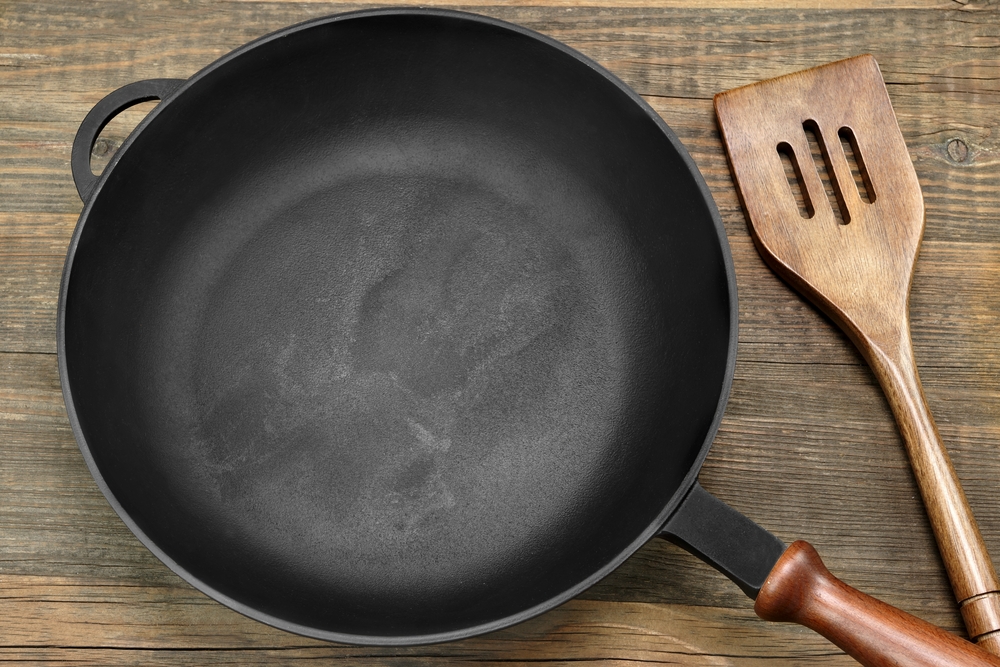
5. Re-Season The Pan
This entire process takes a toll on the surface of the pan. For the pan to be ready to use again you will need to season the pan.
To do this you will need to heat your oven to 300 degrees and line one of your racks with tin foil. This helps to protect the oven from any mess that the seasoning process may cause.
Once the oven has heated up you will spread a layer of oil all over the pan. Then place the pan upside down on the foil covered tray. This will help to prevent the oil from pooling in the pan.
Leave the pan in the hot oven for around 30-40 minutes. This will finish the seasoning process and make the pan safe to use again.
If the surface of the pan was severely damaged you may need to repeat the seasoning process several times.
6. Store The Pan Correctly
The last step is to store the pan correctly. Most rust damage occurs because the pan is being stored incorrectly and is exposed to excessive moisture levels. This makes the cast iron vulnerable to oxidation which erodes the iron and creates patches of rust.
A cast iron pan should be stored in a cool, dry cabinet away from any sources of moisture. This will help to keep the rusting process from beginning again and causing more damage to the pan.
Tips
In the cleaning process, you should make sure to only clean the iron as much as necessary. If you overclean the iron you will damage the iron and have to replace the pan.
Throughout the process, you should also make sure to keep excess moisture away from the iron. This will prevent the oxidation process from beginning again and create more rust on the surface of your cast iron.
How Do I Keep My Cast Iron from Rusting?
To keep your cast iron from rusting the most important thing to do is store the iron properly. This will keep the oxidation process from beginning which causes rust to appear.
You should also make sure to remove stuck food as soon as possible after cooking. This will also keep the seasoning of the pan healthy which helps to prevent rusting.
FAQs
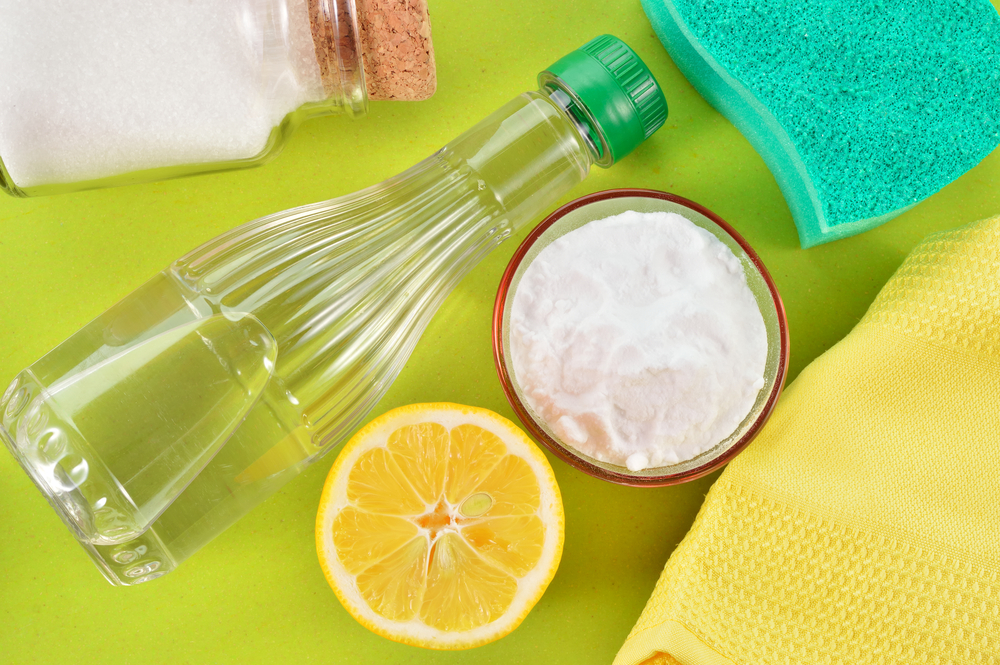
Can I use baking soda together with vinegar to clean cast iron?
You should avoid using baking soda together with vinegar to clean cast iron. Using the two together will create a chemical reaction that can damage the pan and will result in the neutralization of both products.
If you would like to use vinegar and baking soda you should use them separately, not together.
How long do I soak cast iron in vinegar?
You can soak cast iron in vinegar for up to eight hours. However, it is usually not necessary to soak your cast iron this long. During the soaking process, you should continue to check the iron patches and remove the pan once they are soft and easy to scrape away.
What is the fastest way to remove rust from cast iron?
The fastest way to remove rust from cast iron is by using a combination of an acid, like vinegar, and physically scrubbing the rust away.
Summary
Rust can be notoriously difficult to remove from surfaces, especially from cast iron. There are some commercial rust removal products available, however, most of them contain harmful chemicals that are not safe to use in cookware.
White vinegar is a great, safe way to remove rust from cast iron. The acid in the vinegar dissolves the rust and allows you to scrub the rust away more easily using a sponge or dishcloth.


